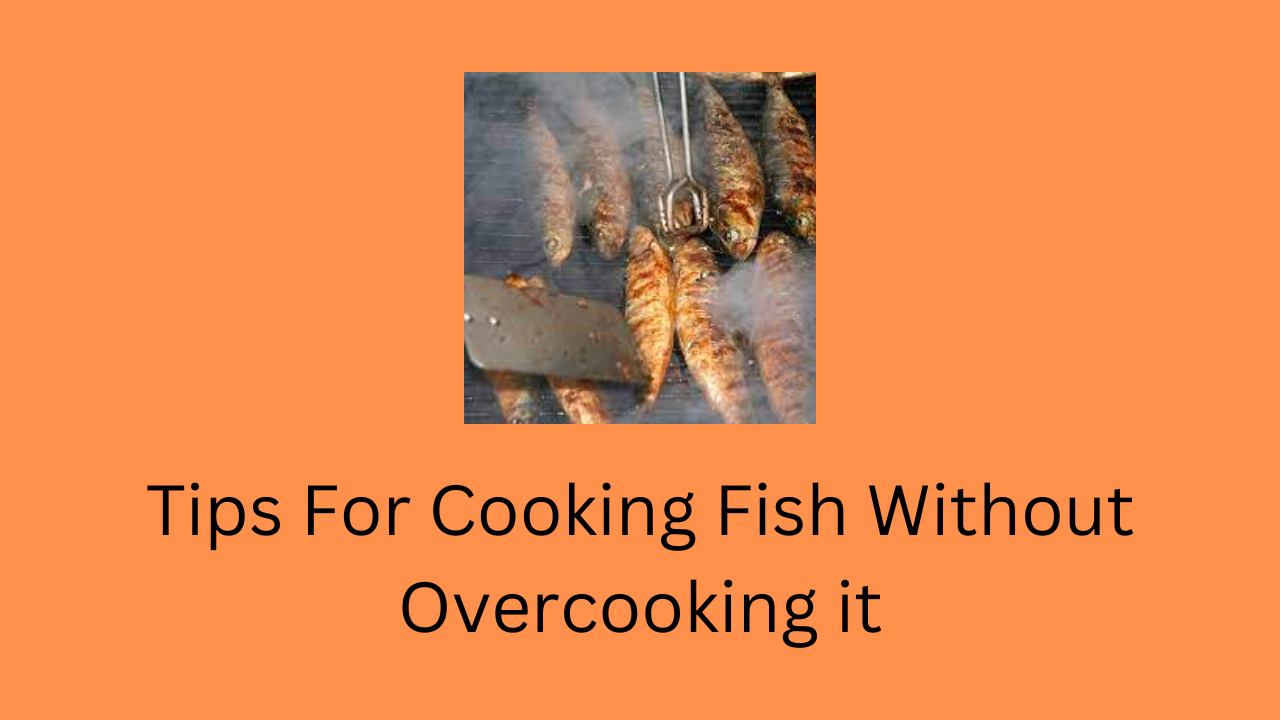Fish is a delicious and healthy food, but it can be tricky to cook properly. One of the biggest mistakes people make when cooking fish is overcooking it. Overcooked fish is dry and tasteless, and it can be a real disappointment.
So how do you cook fish so that it’s moist, flaky, and cooked through without overdoing it? in today’s blog post, I will show you the tips for cooking fish without overcooking it. All you have to do is to read and adhere to all the instruments in this article.
Tips For Cooking Fish Without Overcooking it
Fish is a healthy and delicious food, but it can be tricky to cook without overcooking it. Overcooked fish is dry and tasteless, so it’s important to know how to cook it correctly. Here are some tips for cooking fish without overcooking it:
1. Choose the right fish
Not all fish are created equal when it comes to cooking. Some fish, like salmon and trout, are fattier and can withstand higher cooking temperatures without becoming dry. Other fish, like cod and tilapia, are leaner and should be cooked at lower temperatures.
2. Season the fish well
Seasoning the fish with salt, pepper, and herbs will help to keep it moist and flavorful. You can also add a light coating of olive oil or butter to the fish before cooking.
3. Preheat your pan or oven
This is important for ensuring that the fish cooks evenly. A cold pan or oven will cause the fish to cook unevenly, which can lead to overcooking.
4. Cook the fish for the correct amount of time
The cooking time will vary depending on the thickness of the fish and the method of cooking you are using. A good rule of thumb is to cook fish for 10 minutes per inch of thickness.
5. Use a meat thermometer to check for doneness
The best way to tell if fish is cooked through is to use a meat thermometer. The internal temperature of fish should reach 145 degrees Fahrenheit.
6. Let the fish rest before serving
This will allow the juices to redistribute throughout the fish, resulting in a more tender and flavorful dish.
How Long Should Fish Be Cooked For?
The cooking time for fish will vary depending on the thickness of the fish and the method of cooking you are using. However, a good rule of thumb is to cook fish for 10 minutes per inch of thickness.
For example, if you are pan-frying a fish fillet that is 1 inch thick, you will want to cook it for 10 minutes per side, for a total of 20 minutes. If you are baking a fish fillet that is 1 inch thick, you will want to cook it for 12-15 minutes, or until it flakes easily with a fork.
What Is The 10 Minute Rule For Cooking Fish?
The 10 minute rule for cooking fish is a general guideline that can be used to cook fish by conventional methods including grilling, broiling, poaching, steaming, sautéing, microwaving, en papillotte, planking, and baking (at 400F to 450F). Here is how to use the 10 Minute Rule:
- Measure the fish at its thickest point.
- If the fish is stuffed or rolled, measure it after stuffing or rolling.
- Cook fish about 10 minutes per inch, turning it halfway through the cooking time. For example, a 1-inch fish steak should be cooked 5 minutes on each side for a total of 10 minutes. Pieces less than 1/2 inch thick do not have to be turned over.
- Test for doneness. Flake with a fork. Fish should reach an internal temperature of 145 degrees.
- Add 5 minutes to the total cooking time for fish cooked in foil or in sauce.
- Double the cooking time for frozen fish that has not been defrosted.
What Are Common Mistakes When Cooking Fish?
Here are some common mistakes people make when cooking fish:
- Using the wrong pan. A non-stick pan is ideal for cooking fish, as it will prevent the fish from sticking to the pan and making it difficult to cook evenly.
- Not preheating the pan. This is a major mistake that can lead to the fish sticking to the pan and cooking unevenly. Make sure to preheat your pan over medium heat before adding the fish.
- Overcrowding the pan. When you cook too much fish in one pan, it will lower the temperature of the pan and prevent the fish from cooking evenly. Only cook one or two pieces of fish at a time in a large pan.
- Not seasoning the fish. Fish is a very bland food, so it’s important to season it well. A simple seasoning of salt, pepper, and lemon juice is all you need.
- Overcooking the fish. Fish is a delicate food that can easily be overcooked. The best way to tell if the fish is cooked is to poke it with a fork. If the fish flakes easily, it’s done.
- Not resting the fish. After you cook the fish, it’s important to let it rest for a few minutes before serving. This will allow the juices to redistribute throughout the fish, making it more moist and flavorful.
Conclusion
Cooking fish can be a daunting task, but it doesn’t have to be. By following these tips, you can cook fish that is moist, flavorful, and perfectly cooked every time. So next time you’re in the mood for fish, don’t be afraid to give it a try.

